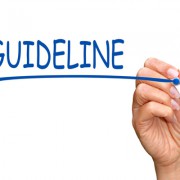Handle with care!
 All Pharma and Biotech companies are working in line with regulatory guidance documents to increase compliance of their drug development plans with accepted processes and procedures. However, guidance documents cannot replace drug development expertise and following them inappropriately can quickly cause minor or major issues.
All Pharma and Biotech companies are working in line with regulatory guidance documents to increase compliance of their drug development plans with accepted processes and procedures. However, guidance documents cannot replace drug development expertise and following them inappropriately can quickly cause minor or major issues.
We were recently asked to review the early development plans from a biotech company with a molecule at pre-IND stage. The team had very diligently studied the FDA guidance documents, but since it is sometimes not obvious why certain experiments are needed and how data need to be integrated to drive subsequent steps, the development plan had some important gaps.
For example, very little emphasis was placed on evaluating the PK in various animal species and deriving concentration/effect (PKPD) relationships. For the calculation of the starting dose for the first-in-human study, the team had used the Human Equivalent Dose (HED) concept outlined in the FDA guidance. While this was perfectly fine, the team then went on and used the HED approach also to calculate the expected therapeutic dose range for the POC study based on efficacy data in monkeys without taking any interspecies differences in PK and or PKPD into account. This “over-interpretation” of the FDA guidance resulted in an increased development risk that we could easily reduce by adding a few key animal experiments into the program to derive a more solid projection of the expected therapeutic target dose.
We also shifted a few of the planned experiments so that critical results would be available at important decision points (eg species selection for GLP tox and definition of inclusion/exclusion criteria for human studies) and the program is now progressing well towards the first clinical study.


